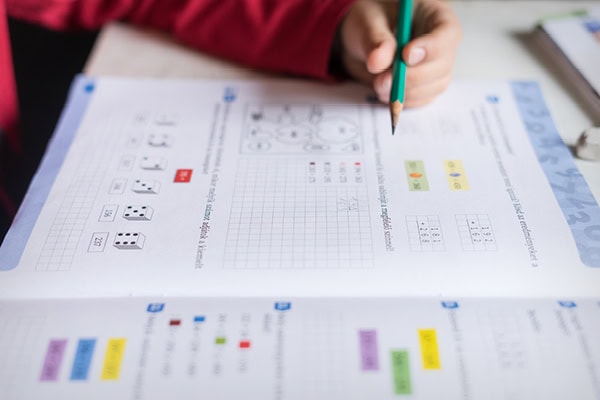Reading books together as a class should be common practice in American English and reading classrooms, says Doug Lemov, author of several books on teaching, including Teach Like a Champion 3.0, in writing a column for Education Next.
“Diverse research supports this assertion and helps explain why the experience of reading books, especially shared books, is critical to ensuring better outcomes in English and reading.
“But today in classrooms, books are few and far between. And they are often selected primarily in the hope that something ‘appealing’ or ‘accessible’ or ‘relevant’ will prompt reluctant students to actually read them. It’s concerning that books are less and less likely to be challenging or chosen for their literary merit.
“The National Council of Teachers of English recently announced its support for the idea of ‘decenter[ing] book reading’ in English language arts education. They suggest instead ‘critically examining digital media and popular culture’ as a more worthwhile pursuit. YouTube videos, they mean to say, are a much easier sell to screen-obsessed teenagers. Argument: Let’s stop trying to get students to read at all and find some other way to be relevant.
“But even in schools with the good sense to ignore NCTE on this point, classrooms have quietly migrated away from the book for other reasons. ‘Over the past few decades, reading comprehension instruction has become ‘content agnostic,’ focused on skill practice,’ Sarah Schwartz wrote recently in EdWeek. It doesn’t really matter what you read, so long as you use it as a vehicle to develop a core set of skills: finding the main idea, evaluating evidence to support a conclusion, making inferences.
“The idea that reading consists of transferable skills students can practice and apply across texts remains the dominant paradigm in American schools, despite the fact that it runs counter to the science, which tells us that reading-comprehension success is largely a product of a readers’ background knowledge and that skills like drawing inferences do not in fact transfer across subject-matter domains.
“Another threat to the centrality of the book in English classrooms comes from the common argument that students will be more inclined to read if they are allowed to read a book of their choice.
“The presumption that choice will mitigate disinterest in reading is questionable. A student who has read a handful of books in his life is less likely to choose a book that will set his mind on fire than a teacher or curriculum designer who has read hundreds and chosen the best. One of the roles of a teacher, in fact, is to introduce students to books that are beyond their current knowledge and interest—and that just might surprise them.
“So why do books matter, and what is this purported research that supports reading them rather than, say, passages or stories or even YouTube videos.
“Johann Hari writes in Stolen Focus, ‘the medium of the book tells us, that . . . the world is complex and requires steady focus to understand; it needs to be thought about and comprehended slowly.’ First impressions often turn out to be wrong. The truth is nuanced and often not simple. If there is a hope for our increasingly fractious and fast-thinking society, it lies in part in the sustained and evolving understanding a book fosters.
“We also learn especially well from stories. Researchers find that people remember ideas and insights better when they encounter them in a story. We remember the facts because they are connected to a story, and the more memorable and compelling the story—and the deeper our relationship to it—the better. Thus, the unique power of books.
“Books are powerful—potentially the most powerful form of written discourse—and centering them in the curriculum is important, especially given the data that students read less and less on their own. But how students read a book also matters.
“We know, for example, that when students have background knowledge about what they are reading, they comprehend more, and this helps them gain further knowledge from the text. All students will learn more if they have greater background knowledge. This means we should be feeding them knowledge as they read.
“Read aloud. A shared book presents an opportunity to read aloud together, but that opportunity is all too often overlooked, especially with older students. David Paige and his colleagues at Northern Illinois University found, in a study of 6th- and 7th-grade students, that oral reading fluency explained between 50 and 62 percent of differences in reading comprehension. Reading aloud together helps build students’ fluency. Students can’t comprehend material when they can’t read it fluently, and too many students don’t get enough practice and development at this core skill.
“A second benefit: reading aloud allows you not just to discuss a book as a group but also to share in the emotional experiences it evokes and in so doing build connection and belonging. One of my favorite videos to demonstrate this effect portrays a teacher named Maggie Johnson reading To Kill a Mockingbird with her 8th graders. They are reading aloud; the scene is a humorous one, in which Scout’s naïveté is revealed, and the class is giggling as a handful of students read. Later they gasp together at the more profound scenes. They share the experience and are connected to one another because of it.
“Stories gain even more power when they are brought to life by reading aloud. In fact, this may be the book’s primary chance of salvation. If the book is going to survive its death struggle with the isolating and disconnecting technology of the smartphone, its best bet, I argue, will be if we can encourage students to read books with each other, laughing and gasping together, and in so doing create meaningful and connected experiences that they hope to re-create by reading more and further. Books are the ideal vehicle to both inform us and link us together. It’s time we brought them back into the classroom and made the shared experience of them the centerpiece of literacy instruction.”
Education Next





